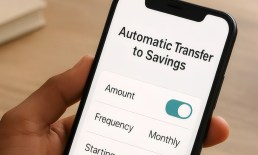In terms of the headline numbers, earnings came in at 78 cents a share, which missed the Street estimates of $1.84, as credit provisions weighed on results. Revenues were off by 3 percent to $29 billion in the quarter.
Eyes on Wall Street may have been focused on trading revenues, at a record $7.2 billion, stemming from huge volatility in the market. But drilling down into the numbers, the banking giant clearly is girding for a deep recession, marked by the inability of corporate clients and consumers to pay their bills across credit cards, mortgages and auto loans. The company boosted its credit reserves by $6.8 billion year over year to $8.3 billion, with more than half of that boost, at $3.8 billion, tied to consumer cards. JPMorgan has projected that the verticals most likely to be impacted by the “fairly severe” recession, per remarks made by CEO Jamie Dimon, would be energy, real estate and retail.
In terms of macro forecasts, management is looking for unemployment to reach 20 percent in the second quarter, as noted by CFO Jennifer Piepszak, and annualized GDP may shrink by 40 percent.
“We’re prepared for a range of outcomes,” she said.
Piepszak noted on the call with analysts that it is offering customer relief, including a 90-day grace period for credit card, mortgage and auto loans, and is not reporting payment deferrals to credit bureaus.
Advertisement: Scroll to Continue
Supplemental materials released by the company show that within the consumer and community banking unit, revenues were down 2 percent year over year to $13.2 billion. Card income in the period stood at just over $1 billion on a consolidated basis, down 17 percent year over year.
Management said on the conference call that, in terms of the Paycheck Protection Program (PPP), as many as 300,000 loans are in some stage of the application process, tied to $36 billion of loans.
Piepszak said during the call that the bank’s liquidity position remains strong, and financial results also show some increased activity in deposits into the end of the period. Average deposits were up about 7.6 percent to $733.6 billion. Card sales volume – across debit and credit – was up 4 percent to $266 billion.
Active mobile customers were up 11 percent to 38.2 million. Total digital customers were up 6 percent to 53.8 million.
Supplementals reveal that the net chargeoff rate for cards came in at 3.25 percent, up from 3.01 percent at the end of the year. The delinquency rate for the card business stood at 1.02 percent, up six basis points from the fourth quarter.
Dimon said on the call that amid loan loss reserves and some of the forbearance activity, “If we can help the country get through this, everybody’s better off” – even if the bank loses more money to get there.



